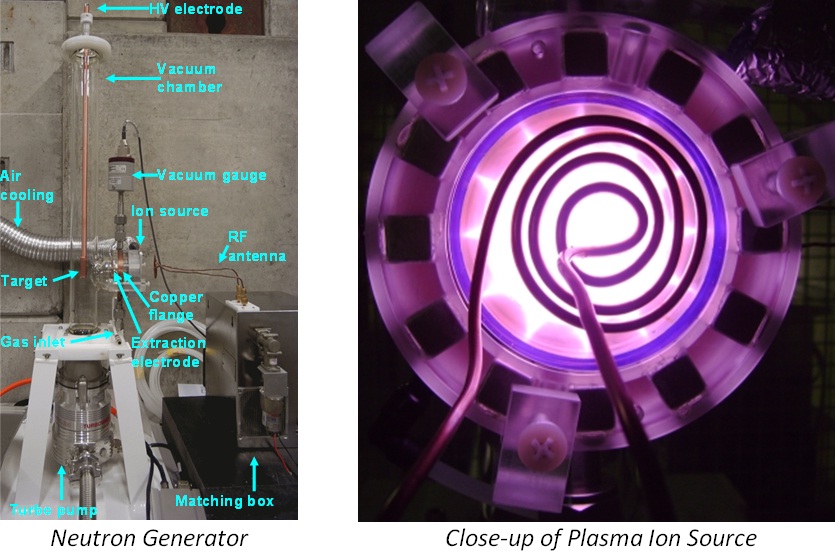D-D Fusion Neutron Generator Development
A fast neutron generator based on the D-D fusion reaction is being developed at the Paul Scherrer Institute for imaging applications. Deuterium ions are produced in a plasma form through excitiation from an RF antenna. The ions are extracted from the plasma and accelerated towards a Titanium target, where deuterium builds up on the surface. On this surface, D-D fusion reactions can take place, which produces a fast neutron of energy 2.5 MeV.
This particular generator is unique in that it is being developed specifically for fast neutron imaging applications. The beam spot size is as small as possible (~2 mm diameter), which is necessary because the spot size limits the resolution of images due to smearing from the source. The target and vacuum chamber geometry is also designed to allow imaging subjects to be placed as close to the source as possible, which makes imaging at higher resolution easier. There is also a minimum of material between the source and subject locations, which can also degrade image quality.
Development of the generator to increase the neutron output and minimize the emitting spot size are ongoing, and the generator is being used to develop detectors and imaging systems for use with fast neutrons. The imaging process is comparable to commonly used X-Ray techniques, where more dense material attenuates the radiation more, allowing for imaging of internal structures. The advantage of neutrons, compared to X-Rays, is that they are more highly penetrating, and allow for larger, or more metallic, subjects to be imaged. The challenge, however, is that neutrons are harder to produce in large quantities, and harder to detect due to their penetrating nature.
For further information contact Robert Adams
Contact
No database information available
